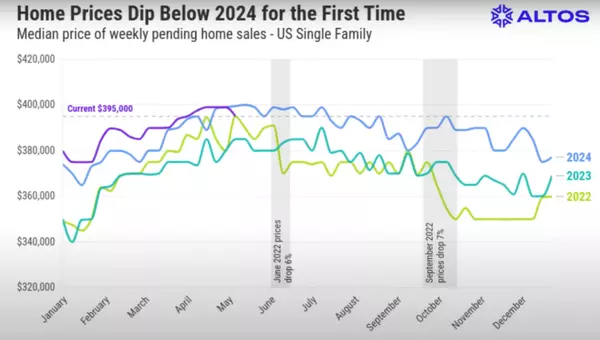Trump’s Plan to Build Housing on Federal Land: What It Could Mean for the Housing Crisis
Exploring the potential of federal land development under Trump’s second term.
As President Donald Trump begins his second term, housing advocates and industry experts are closely examining what his proposals could mean for addressing the nation’s growing housing affordability crisis. One of the most notable ideas involves opening up federal land for housing development, a move that could reshape the conversation around affordable housing.
Federal Land as a Housing Solution
Throughout his campaign, Trump emphasized deregulation, tax cuts, and lowering mortgage rates as cornerstones of his housing policy. He also proposed making federal land available to developers, requiring a portion of housing units to remain affordable for local communities.
The U.S. government controls approximately 650 million acres of land. By selling parcels to private developers under specific affordability requirements, Trump aims to stimulate housing construction while leveraging the private sector's efficiency. “The private sector is better positioned to build affordable housing, and there’s nothing wrong with them making a profit as long as the housing remains accessible to working-class families,” said David Dworkin, president of the National Housing Conference.
However, past attempts to use federal land for affordable housing have faced significant opposition. Critics argue that nearby residents often resist these projects, preferring to keep their neighborhoods untouched.
Challenges to Implementation
While the plan holds potential, experts caution that logistical and environmental hurdles must be addressed. Andrew Jakabovics, vice president for policy development at Enterprise Community Partners, notes that much of the federally owned land is in rural or remote areas, which complicates construction. “Building in the middle of nowhere isn’t feasible due to the cost of transporting materials and labor,” he said.
Instead, Jakabovics suggests focusing on underutilized federal land within urban and suburban areas where infrastructure, schools, and amenities already exist. This approach could maximize housing production while minimizing environmental and logistical challenges.
Labor and Economic Impacts
Another significant challenge lies in the labor market. A substantial portion of construction workers are undocumented immigrants, according to census data, and Trump’s promise to increase deportations could disrupt the workforce. “About a third of construction workers are non-citizens,” said Daryl Fairweather, chief economist at Redfin. “Sudden labor shortages could delay projects and increase costs, making the plan harder to execute.”
Lessons from Recent Initiatives
The Trump administration isn’t the first to explore using federal land for housing. Just last month, the Biden-Harris administration sold 20 acres of federal land in southern Nevada to Clark County for $2,000—a fraction of its $20 million value. The land will be used to build 210 affordable homes for families earning $70,000 or less, demonstrating a successful model for leveraging public land to address housing needs.
Balancing Profit and Affordability
Experts agree that balancing developers’ profit motives with affordability requirements is critical to the success of such initiatives. “Developers will naturally target the most viable opportunities,” Dworkin explained. “The government needs a process that ensures fairness and equity while encouraging private investment.”
Jakabovics added that addressing the housing crisis requires building in high-demand areas, not just coastal cities but also growing regions like Phoenix, Omaha, and Nashville.
Looking Ahead
While Trump’s federal land proposal has sparked debate, many are skeptical about its feasibility. Critics point to his campaign rhetoric, which avoided discussions of subsidized housing, and question whether much of the federal land available has real market value.
Nonetheless, the housing crisis remains a pressing issue. As homelessness and affordability challenges grow, the nation will need bold solutions to increase housing supply and address the needs of working-class families. Whether Trump’s plan can deliver meaningful progress remains to be seen.
For now, housing advocates are calling for bipartisan collaboration to address these challenges. As Dworkin put it, “There’s a lot of common ground to make progress on—and this is one of them.”












